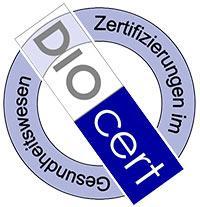About the disease
Medulloblastoma is a pediatric malignant tumor that already develops in embryonic cells and manifests itself predominantly in childhood. Medulloblastoma is responsible for approximately 20% of all brain tumors in children. It rarely affects adult brain. This tumor develops in the cerebellum which is part of the skull. Medulloblastoma is a relatively rare tumor of central system, which can metastasize to spinal cord and ventricles of the brain. Prognosis depends on the stage of tumor, presence of metastases, patient's age and indications for radical surgery. Postoperative mortality is 5% with a big chance of medulloblastoma recurrence. Survival rate for boys with progressed stage of disease is about 24% and for girls - 10%. The younger is the sick child, the more malignant are neoplasms and the faster is pathological process in the brain stem, which is responsible for vital body functions.
Irradiation and environmental influences may have connection with the development of brain tumors in children. Nevertheless, hereditary predisposition of this disease is a leading cause of this disease. 5% of patients with autosomal dominant carcinoma can later develop medulloblastoma. 40-50% of the children who have chromosome 17 are under the risk.
Symptoms
- Increased intracranial pressure
- Headache
- Vomiting (usually in the morning)
- Problems with vision
- Lethargy
- Cushing's triad (hypertension, bradycardia, hypoventilation) is rare for children with increased intracranial pressure and if this triad is found, then, as a rule, it may indicate impending herniation
- Fatigue
- Irritability
- Diplopia and compression of certain cranial nerves, which can lead to stiffness of facial features
- Ringing in the ears
- Problems with hearing
Since cerebellum part of the brain is responsible for muscle coordination, medulloblastoma can cause problems with walking, balance and speech disorders. Other specific symptoms of medulloblastoma are nystagmus, stiff neck and muscle weakness. Children may also have gradually developing ataxia in lower ligaments.
Diagnosis
Main method of diagnosis is magnetic resonance imaging and contrasted computed tomography. MRI study of the spinal cord gives an indication of the presence or absence of metastases.
Treatment
Doctors usually use combination of surgery, radiotherapy and chemotherapy to treat this disease. They can also use stereotactic biopsy to cure this disease. Stereotactic biopsy is removal of malignant tissue by three-dimensional computer technology. This is an absolutely innovative treatment option, which is safer than surgery. Also, according to News Medical, which is a medical site, proton beam therapy is a more favorable treatment option for treating child`s tumor. Findings of research on proton beam therapy also state that this treatment is less toxic than radiotherapy.
- Surgical removal of the tumor suggests use of microsurgical techniques, such as intraoperative MRI navigation.
- Radiation is needed in case surgical intervention can not be performed. Radiotherapy can also be used after surgery if there are some malignant cells left. If there are no metastases radiotherapy is assigned in low doses to minimize the side effects. If there are metastases or tumor is not completely removed, radiation therapy is administered in large doses. Children under three years can not receive radiotherapy.
- Chemotherapy is administration of agents that kill malignant cells.
American scientists have recently offered an innovative treatment option for medulloblastoma. They injected measles virus into the body of the child, so that he could undergo genetic modification. Experiments on mice have confirmed that the modified measles virus kills malignant medulloblastoma cells in just 72 hours. This can be used only for children who have not had measles before.
Authors: Dr. Nadezhda Ivanisova, Dr. Bohdan Mykhalniuk

















